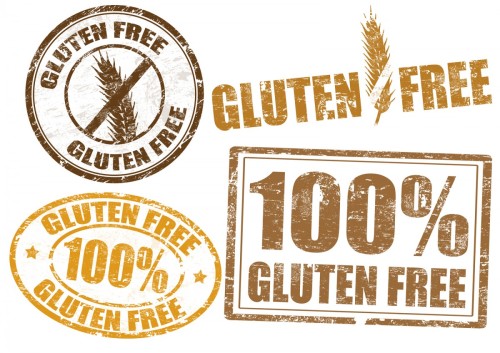Retail Trends | How Gluten-Free is Trumping Price
This blog post was written by our guest blogger, Brendan Keogh, ViewPoint Panel Coordinator at Research & Marketing Strategies (RMS). Brendan shares his time between RMS and being a full-time student at SUNY Oswego.
As a college student living off campus with a job at RMS, I always try to find a way to save a few bucks. This is especially true when it comes time to take a trip to the grocery store. Name brand items are foreign objects to me, and I have taken comfort in less expensive, store brand knock-offs. After doing some secondary research on retail sales statistics, it is nice to know that I am not alone.
Nielsen Company conducted a survey in August of 2012 regarding how the rising price of foods has affected consumer buying decisions. 85% of respondents stated these rising prices have influenced their decision, with 52% stating that the high prices have a major effect on their decision. Out of 16 grocery purchasing factors, ‘high price’ scored number one in the Nielsen online survey. Despite this, price does not seem to affect the rather new gluten-free segment. This once small market segment is quickly growing into an enormous consumer trend and segment to be monitored in the retail data landscape.
If you have not heard by now, gluten-free products are one of the newest food trends. Coming from a family with many of whom are gluten-free, the topic has always intrigued me. It is constantly being discussed in my family, mainly centering around the health benefits gained from eliminating gluten in your diet. What has never been discussed are the outrageous prices of these gluten-free products. What began as a method to ease the pain of a diagnosed food allergy for those with Celiac’s disease, has suddenly morphed into one of the largest and most expensive food trends of our (or at least my) time.
After reading countless internet forums and social media posts, those who consider themselves gluten-free rave about how healthy they feel after eliminating gluten out of their diet. Their wallets may beg to differ. The gluten industry boasted $10.5 billion in sales during the 2013 year, with the average gluten-free product costing 242% more (according to Canada’s Dalhousie Medical School) than its gluten-filled alternative. Which begs the question, is this gluten-free trend here to stay?
Recent surveys have shown that the gluten-free consumption is increasing, and at a very fast pace. 29% of Americans say that they are cutting back gluten from their diet, and the number of households that report buying gluten-free products has jumped from 5% to 11% over the past 4 years. No other food-specific segment has seen such growth since 2010.
More popular food items will soon offer a gluten-free alternative. Marketers have even begun placing “gluten-free” banners on products that have always been gluten free and didn’t feel the need to advertise it due to low awareness and low impact on decision-making. Companies in the food industry will continue to take advantage of this growing trend. As Harry Balzer, VP of NPD Group put it, “About 30% of the public says it would like to cut back on the amount of gluten it’s eating, and if you find 30 percent of the public doing anything, you’ll find marketers right there too.”
The recent Nielsen online survey reported that price was the most influential buying factor for grocery store buyers. Although this may be true, the gluten-free segment may be an exception because it is still in its niche phase. People are more willing to pay more because certain gluten products are harder to find. On a large-scale, yes, price will be the most influential buying decision worldwide. On average shopper will continue to choose the more inexpensive alternative.
Current projections show that the gluten-free category will grow to $6.6 billion by 2017, with no true signs of slowing down. That being said, I think that for the near future that this trend is here to stay, but if prices do not show any signs of leveling off, I think that the gluten-free phenomena will soon die out.
Research & Marketing Strategies (RMS) is a market research firm in Syracuse NY that specializes in retail market research. RMS has conducted a number of buyer behavior studies for retail products and services using methodologies such as online surveys, panel surveys, focus groups, and shop-alongs. If you would like to contact RMS about a retail research project please call our Director of Business Development, Sandy Baker at [email protected] or by calling 1-866-567-5422.

I think an assumption that people will pay higher prices for gluten free products is flawed. As more companies develop recipes and use innovative ingredients, the costs will come down dramatically. There is a company called Sam Mills whose mission is to make and sell gluten free food that costs around what conventional foods cost.
Are they all very good? Taste is subjective, but needless to say ,most people just cannot afford to eat pasta that costs around $9.00 a pound indefinitely.
As for the present – if it is all you can eat, then you pay for it, but most likely, many people are cutting back on non-essentials.